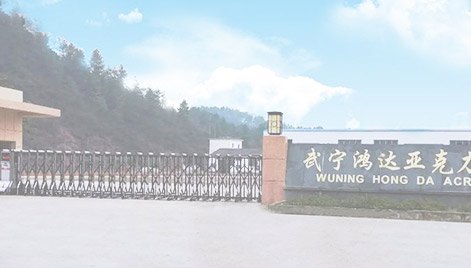one, what material is acrylic
Acrylic (ACRYLIC), also known as PMMA or acrylic, acrylic.
The chemical name is polymethyl methacrylate. From the English Organic Glass, it means a PMMA board made of organic compound MMA. Its transparency and light transmittance are like glass. Acrylic is an important thermoplastic that has been developed earlier.
Acrylic products include acrylic sheets, acrylic plastic pellets, acrylic light boxes, signboards, acrylic bathtubs, acrylic artificial marble, acrylic resin, acrylic (latex) paint, etc., with a wide variety of products. Commonly seen acrylic products are acrylic products assembled from raw materials such as acrylic pellets, plates, or resins through various processing methods, combined with various parts of different materials and functions. As for the commonly heard acrylic fiber, acrylic cotton, acrylic yarn, acrylic nylon, etc., it refers to man-made fibers made by the polymerization of acrylic acid, and has nothing to do with acrylic products.
two,The main uses of acrylic materials Do you know what acrylic is?
I believe you know it roughly. Let's take a look at the use of acrylic materials.
PMMA is a polymer obtained by the polymerization of acrylic acid and its esters, collectively referred to as acrylic resins, and the corresponding plastics are collectively referred to as polyacrylic plastics. Among them, polymethyl methacrylate is the most widely used. The abbreviation code of polymethyl methacrylate is PMMA, commonly known as plexiglass, which is by far the most excellent synthetic transparent material.
PMMA has the advantages of light weight, low price, and easy molding. Its molding methods include casting, injection molding, machining, thermoforming and so on. Especially for injection molding, it can be mass produced, the manufacturing process is simple, and the cost is low. Therefore, its application is becoming more and more extensive. It is widely used in instrument and meter parts, automobile lights, optical lenses, transparent pipes, etc.
Application areas:
1. Architectural applications: shop windows, soundproof doors and windows, lighting shades, telephone booths, etc.
2. advertising applications: light boxes, signs, signs, display racks, etc.
3. Transportation applications: doors and windows of trains, cars, etc.
4. Medical applications: baby incubators, various surgical medical appliances, civilian products: bathroom facilities, handicrafts, cosmetics, brackets, aquariums, etc.
5. Industrial applications: instrument surface plates and protective covers, etc.
6. Lighting applications: fluorescent lamps, chandeliers, street lampshades, etc.
Application areas: hotels, shopping malls, office buildings, clubs, villas, museums, medical care, education, catering, exhibitions, etc.
Application areas: suspended ceilings, integrated ceilings, partitions, screens, sliding doors, transparent walls, hotel furniture, office furniture, bar counters, lighting, chandeliers, signs, signs, floors, landscapes, etc.
Three, the advantages and disadvantages of acrylic materials
Advantages: Acrylic is the best new material for sanitary ware after ceramics. Compared with traditional ceramic materials, besides the unparalleled high brightness, acrylic has the following advantages: good toughness, not easy to break; strong repairability, as long as the soft foam is dipped in toothpaste, the sanitary ware can be wiped new; soft texture, winter There is no icy feeling; the colors are bright, which can meet the individual pursuit of different tastes. Basins, bathtubs, and toilets made of acrylic are not only exquisite in style, durable, but also environmentally friendly. The radiation is almost the same as the radiation of the human body's own bones. Acrylic sanitary ware first appeared in the United States and has accounted for more than 70% of the entire international market.
Disadvantages: Due to the difficulty and high cost of acrylic production, there are many low-quality and inexpensive substitutes on the market. These substitutes are also called "acrylic", in fact they are ordinary organic boards or composite boards (also known as sandwich boards). Ordinary organic board is cast with ordinary organic glass cracking material and pigment. The surface hardness is low, easy to fade, and the polishing effect is poor after sanding with fine sand. The composite board has only a very thin layer of acrylic on the surface and ABS plastic in the middle. It is easy to delamination due to thermal expansion and contraction during use. True and false acrylic can be identified from the slight color difference and polishing effect of the sheet section.
Source: Zhihu- Previous Article : How to maintain plexiglass acrylic products?
- Next Article : It turns out that these are the advantages of acrylic

 Current Location:
Current Location: 







